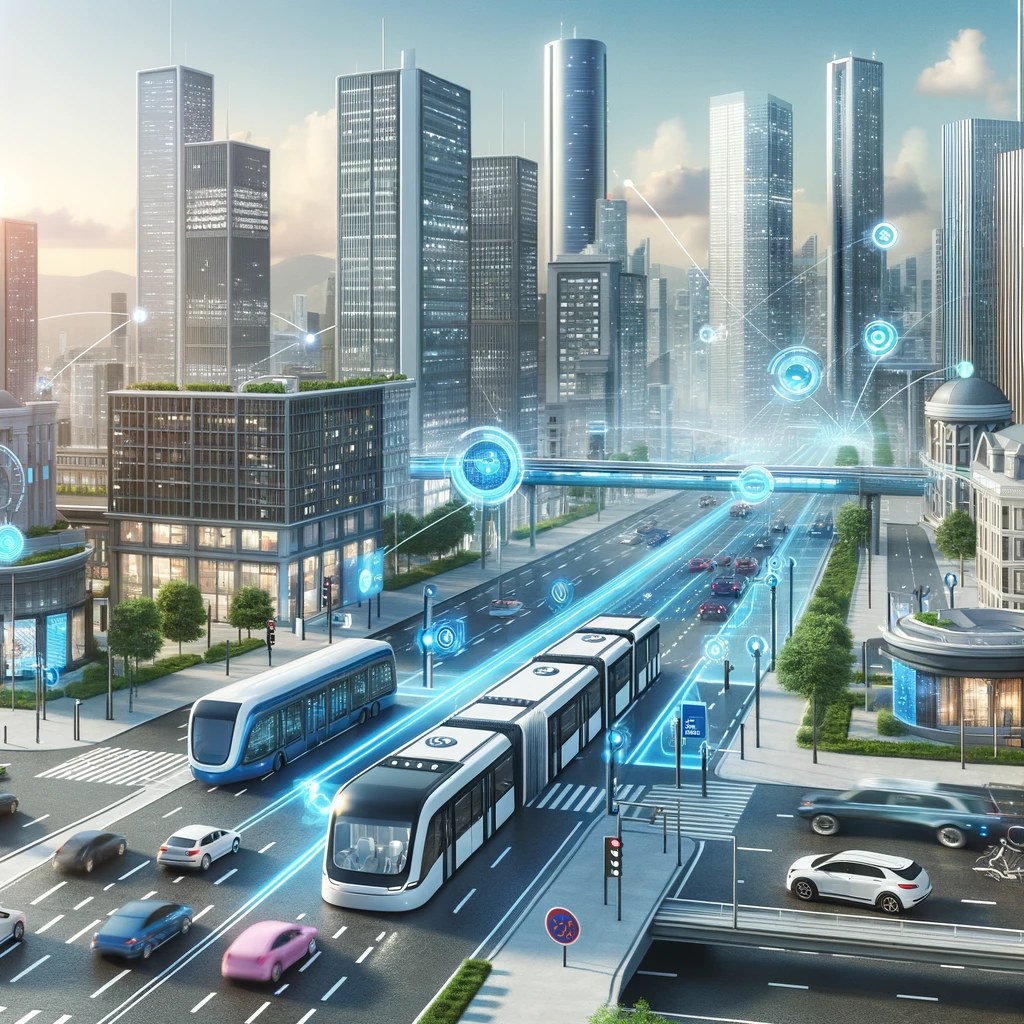In the era of rapid urbanization and technological advancement, the concept of “smart cities” has emerged as a critical solution to urban challenges, particularly in the realm of transportation. Smart cities utilize digital and telecommunication technologies to enhance the quality and performance of urban services. This article explores how smart city technologies are being integrated into transportation systems to create more efficient and sustainable urban environments.
Integration of IoT and Transportation
At the heart of smart city transportation is the Internet of Things (IoT). IoT technology involves a network of sensors and devices that communicate data in real time. In transportation, this means everything from traffic lights and road sensors to vehicles themselves can collect and exchange data. For instance, in cities like Singapore and Barcelona, IoT enables traffic management systems to adjust signals based on real-time traffic conditions, reducing congestion and improving flow. This integration not only minimizes traffic delays but also reduces vehicle emissions, contributing to a cleaner environment.
Advanced Public Transit Systems
Smart cities are revolutionizing public transit through advanced technologies. Automated rapid transit systems, such as driverless trains and buses, have been implemented in several urban centers around the world. These systems are highly efficient, often capable of handling a higher number of passengers while maintaining punctuality and safety. Additionally, many cities are adopting e-ticketing and mobile app services, which streamline the process of using public transportation, making it more accessible and user-friendly for residents and visitors alike.
Electric and Autonomous Vehicles
Electric Vehicles (EVs) and Autonomous Vehicles (AVs) are becoming integral to the smart city landscape. Urban centers are increasingly supporting the shift to EVs by installing extensive networks of charging stations. Furthermore, pilot programs for AVs are being tested in various cities, promising a future where cars communicate with each other and road infrastructure to optimize driving routes and reduce traffic congestion. These technologies not only aim to enhance transportation efficiency but also strive to reduce the carbon footprint of urban transport.
Data Analytics and Transportation Planning
Data analytics plays a pivotal role in shaping the transportation networks of smart cities. By analyzing vast amounts of data collected from various sources, city planners can make informed decisions about where to expand or modify transport services. This can include determining the need for new bus routes, evaluating the effectiveness of existing traffic measures, or planning the development of new infrastructure projects. Such data-driven approaches ensure that urban transportation adapts to the changing needs of the city’s population.
Enhanced Mobility with Smart Infrastructure
Smart infrastructure is another cornerstone of smart city transportation. This includes the development of intelligent road systems capable of communicating with vehicles to warn drivers of hazardous conditions or traffic jams. Smart lighting systems that adjust based on natural light conditions or pedestrian volumes are being used to enhance safety while reducing energy consumption. Additionally, smart parking solutions use sensors to guide drivers to available parking spots, reducing the time spent circling city blocks looking for space.
Conclusion
Smart cities represent the future of urban living, with transportation at the forefront of this transformation. By integrating IoT, advancing public transit technologies, embracing EVs and AVs, leveraging data analytics, and developing smart infrastructure, cities are becoming more livable and efficient. As we continue to face global challenges such as population growth and climate change, the role of smart city technologies in transportation becomes not just beneficial but essential for sustainable urban development.
